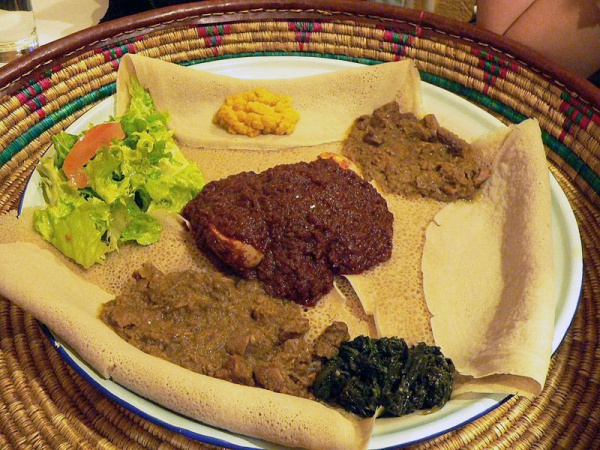Facts About Ethiopian cuisine
Ethiopian cuisine is a delightful medley of vegetable and spicy meat dishes, typically served on a large sourdough flatbread called injera. This cuisine features a variety of stews, meat dishes, and legumes, often influenced by the fasting periods prescribed by the Ethiopian Orthodox Tewahedo Church, making many dishes vegan-friendly. Key ingredients such as berbere (a spice blend), niter kibbeh (a spiced clarified butter), and mitmita (a spicy seasoning) are fundamental to Ethiopian cooking.
Popular traditional dishes include wat, a hearty stew, and tibs, sautéed meat. Italian influences are evident in pasta dishes, a legacy of the brief Italian occupation. Coffee holds a special place in Ethiopian culture, often enjoyed through a traditional coffee ceremony performed after meals. Due to religious beliefs, Ethiopian Orthodox Christians, Jews, and Muslims avoid pork and shellfish.
Unique regional dishes such as kitfo (minced raw beef), gomen kitfo (collard greens with spiced butter), and wassa are specialties from areas like Gurage and Sidama. Breakfast often features fit-fit (shredded injera mixed with spices) and genfo (a thick porridge), while snacks include Dabo Kolo (spiced roasted barley) and kolo (roasted grains and legumes). The tradition of gursha, where food is shared as a gesture of friendship, is a cherished part of Ethiopian dining.
Traditional alcoholic beverages like tella (a home-brewed beer) and tej (a honey wine) are popular, along with non-alcoholic drinks like kenetto and borde. Ambo Mineral Water is a favored manufactured drink. The coffee ceremony remains a significant cultural practice, with coffee being a beloved national beverage.
Ethiopian cuisine offers a rich tapestry of flavors and textures, reflecting the country's diverse culinary traditions and cultural practices.

 Kenya
Kenya